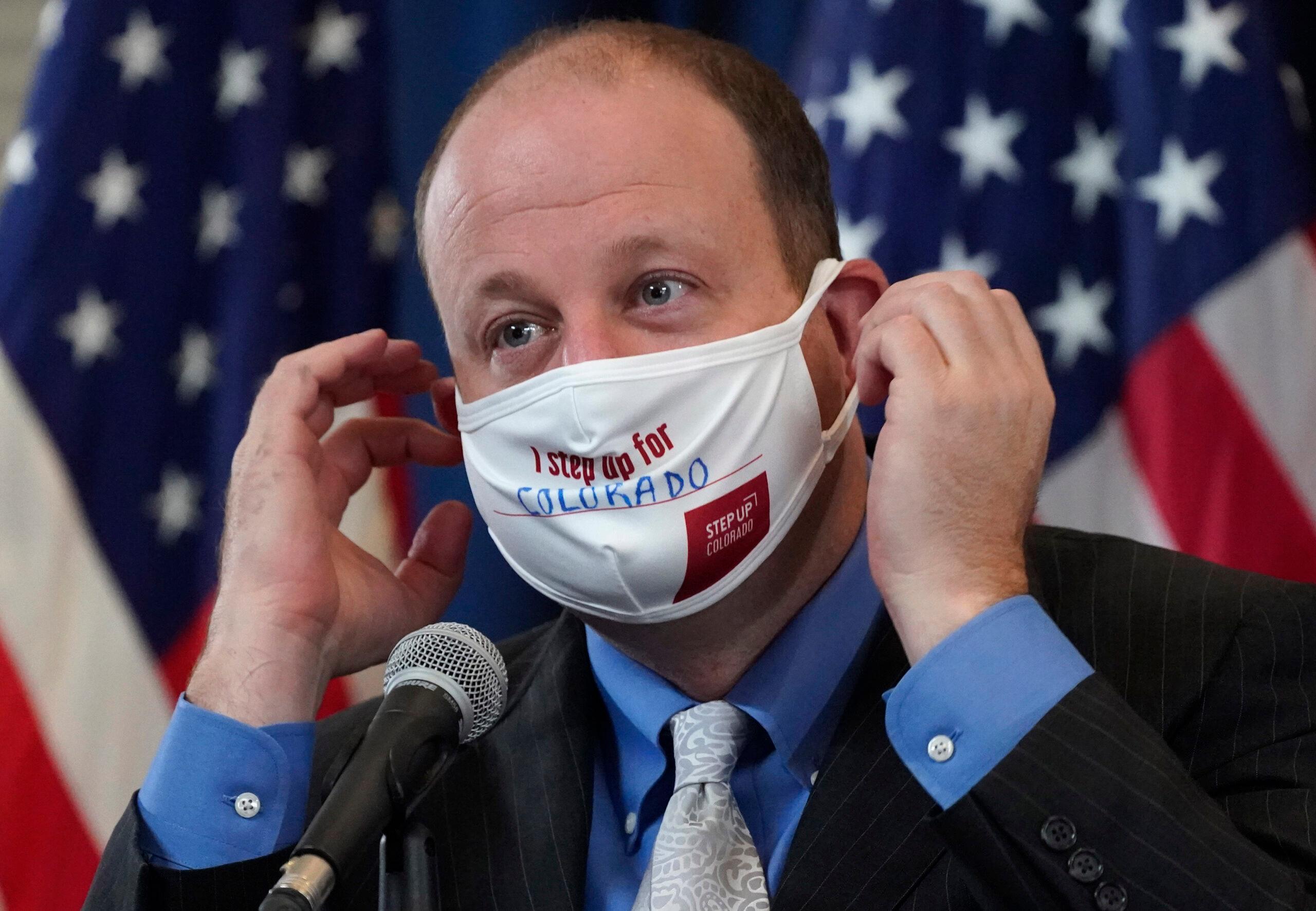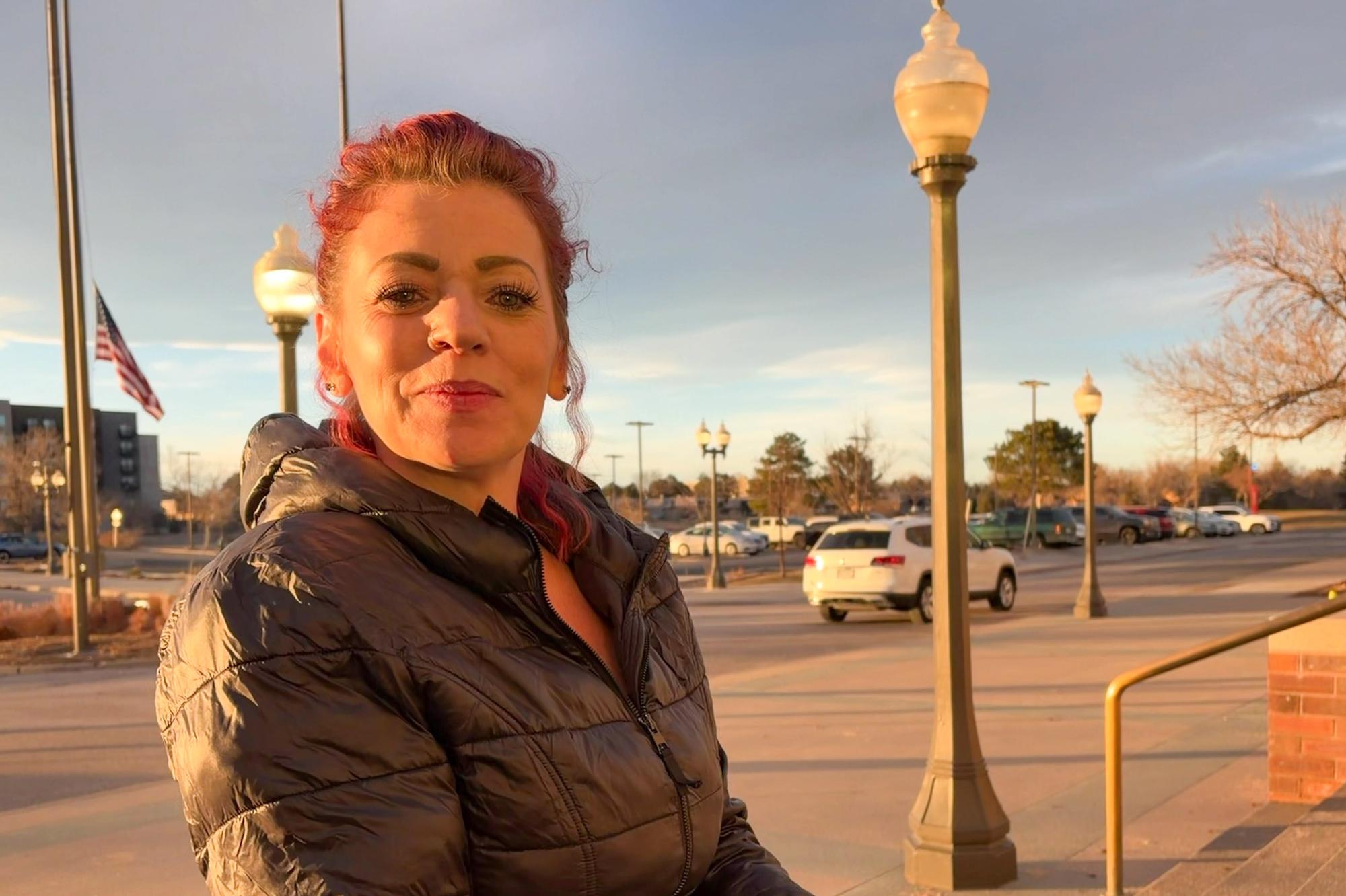
Colorado is entering dangerous new territory in its response to the pandemic, with hospitalizations and cases rising, and a narrow pre-holiday window to rein things in.
That’s according to the governor and top state health officials, who gave an ominous assessment to reporters at the Governor’s Mansion on Tuesday.
“We continue to see a rapid increase in COVID-19 cases and hospitalizations in Colorado,” said Dr. Rachel Herlihy, the state epidemiologist.
She said the data showed a clear third wave, after the initial surge in March-April and another smaller wave in July.
“At this point, our hospital admission rate is the same as it was in May and is steadily increasing,” she said.
When Colorado saw runaway transmission in the early spring, the state took unprecedented steps, including a stay-at-home order and the shutdown of its ski areas. Gov. Jared Polis sidestepped questions about whether he saw a scenario that would necessitate a return to those measures. Instead, he spotlighted recent local responses, like in Boulder County, which brought high case numbers down after instating strict restrictions.
“The strong public health response needs to be sustainable and needs to show how we can live our lives in a safe way,” Polis said.
But he also noted residents need to combat complacency, because “fatigue is setting in.” He said the virus has sent infected Coloradans to the hospital in numbers not seen in months.
“Many will make it out and some will not. Some will not make it, and they will join the increasing casualties from this deadly worldwide pandemic,” he said.
Polis said it had disproportionately affected the U.S. “because of our nation's lack of preparation and a national plan.”
The slide deck of data the governor and his team presented tell the tale of Colorado’s mid-October COVID-19 story. Here are a few headings:
- Case counts and 7-day average are increasing rapidly;
- Daily counts of new hospital admissions are increasing rapidly;
- Hospitalizations are accelerating over the last few weeks and on track to exceed spring hospitalization peak in November.
Herlihy said combined efforts of the public physical distancing, mask-wearing and other measures were helping to decrease transmission by about 66 percent. But she said that those numbers needed to be significantly higher, more like 75 percent.
“Reducing transmission by 75 percent or 80 percent in the next week or so … we have the potential to avoid exceeding our spring wave,” she said. “But we've done it before. We were at about 90 percent transmission reduction in the spring, but it's going to take a lot of effort to get there.”
She said what’s known as the R-naught, a key transmission metric epidemiologists follow carefully, has ticked up into troubling territory, up to 1.51.
“Our goal is always to try and have the R value be under 1. At this current high level of R we expect hospitalizations to continue to grow at a faster and faster rate,” she said.
A report from the Center for Public Integrity released Tuesday underscored the urgency. Colorado joined 30 other states now in the “red zone” for new coronavirus cases. That was according to information the group obtained from the White House Coronavirus Task Force. Michigan, Ohio, Texas and West Virginia also joined that club of states with more than 100 new COVID-19 cases per 100,000 residents.
The nation as a whole is also in the red zone.
Though the White House does not make the report public, they are sent weekly to governors. The Center for Public Integrity collects and publishes them.
For months, the governor and top health officials have urged the public to follow health advice to avoid overwhelming hospitals, particularly intensive care units, where providers treat their sickest patients, including those with COVID-19.
Herlihy discussed a series of charts as dire as state officials have displayed in months. They showed the state’s hospitals would approach ICU capacity in late December if the current transmission level of 66 percent continues. ICU bed capacity is expected to be exceeded if typical holiday interactions occur.
The state’s residents now need to flatten the curve of cases again, just as they did in the spring, she said.
“The story is better or worse depending on whether transmission increases or decreases between now and Thanksgiving,” Herlihy said.
And Polis echoed those worries.
“We just have this short window of time to get this back under control before the holiday season. And we need to do it,” Polis said.
Poor control of transmission, with a 10 percent decrease in people’s social distancing starting the week of Thanksgiving, could result in ICU capacity being reached sometime between the second week and the last week of December. Depending on how that plays out, the state could see a staggering number of cumulative deaths: between 8,700 and 15,400. But if the state’s residents do better and control transmission at a level of 75 percent the model projects the number of deaths being much lower, 4,600.
“We can cut cases and deaths in half in the state. Now's the time to continue to follow public health guidance,” Herlihy said.
She encouraged an “all of the above” approach: stay home when you are sick, wear a mask, physically distance, avoid gatherings and wash your hands.
She said one thing the public can do to help ensure hospital capacity isn't overrun is to get a flu shot. That'll help prevent flu-related hospitalizations, allowing hospitals to conserve resources.
“It's best to get that done this month,” she said. “The more we do the more we protect ourselves, our families and our community.”
To highlight the public health push, the state launched a community-based informational campaign, called “Step Up Colorado.” Staffers handed out white masks with the new logo at the press event.
The push was guided by more than 20 meetings with local public health agencies, nonprofits, and other community-serving organizations, input from the recently disbanded Health Equity Response Team, statewide research panels and surveys conducted.
“Step Up Colorado” will focus on awareness of public health guidelines related to COVID-19, including Colorado’s communities that have been most impacted by this pandemic, like those ages 65 and older, 18-24-year-olds, and Black and Hispanic/Latino Coloradans.
A diverse group of 60 community influencers throughout the state will help spread the word.
“What we each do personally impacts our communities. We need everybody to do their part,” said Jill Hunsaker Ryan, the state health department director. “We can’t become complacent. That’s why we’re asking all Coloradans to do everything they can to reduce the spread.”
Ryan encouraged Coloradans to pay attention to the color-coded COVID-19 dial, which identifies a county's current pandemic posture, a visualization to help residents know when they need to be especially mindful of their social contacts.
On the state’s COVID-19 data website, 28 of the state’s 64 counties fell in the Safer Level 2 (yellow) category, which indicates “concern.” Just one county, Logan, in the northeast corner of the state was at the next level up: Safer Level 3, which indicates “high risk.”
“Each county moves to a more or less open level, depending on how their numbers are looking over a two-week period, but they do so in partnership with the state,” Ryan said. “If a county exceeds their numbers for a certain level, it's like a check engine light.”
Also at Tuesday’s news conference, Department of Agriculture Commissioner Kate Greenberg announced that Colorado would distribute $1 million in federal relief money from the Colorado Farm & Food Systems Respond & Rebuild Fund. Agricultural producers are eligible for grant awards up to $12,500, she said. Those eligible for up to $50,000 include farmers’ markets, food hubs, processors, and other intermediaries that support producers.
“COVID-19 has had serious impacts on agriculture and underscored how vital our food systems are,” Greenberg said. “It is critical that farmers, ranchers, and processors receive financial support to ensure their operations continue in the wake of this unprecedented pandemic.”
The state’s daily COVID-19 update Tuesday presented a mixed bag. The daily positivity rate, the rate of positive test results, was flat at 6.24 percent, same as the day before. The state recorded a small drop in seven-day positivity from 5.45 percent to 5.42 percent. That’s the first drop in the seven-day positive rate since October 3, when it fell to 3.38 percent and started a climb that continued until Tuesday.
But the state recorded a big jump in hospitalizations. Those numbers tend to naturally lag changes in positivity, but the figure is now up above 500 for the first time since May 26. The state reported 516 patients hospitalized with confirmed or suspected COVID-19 cases, up from 465 Monday.









